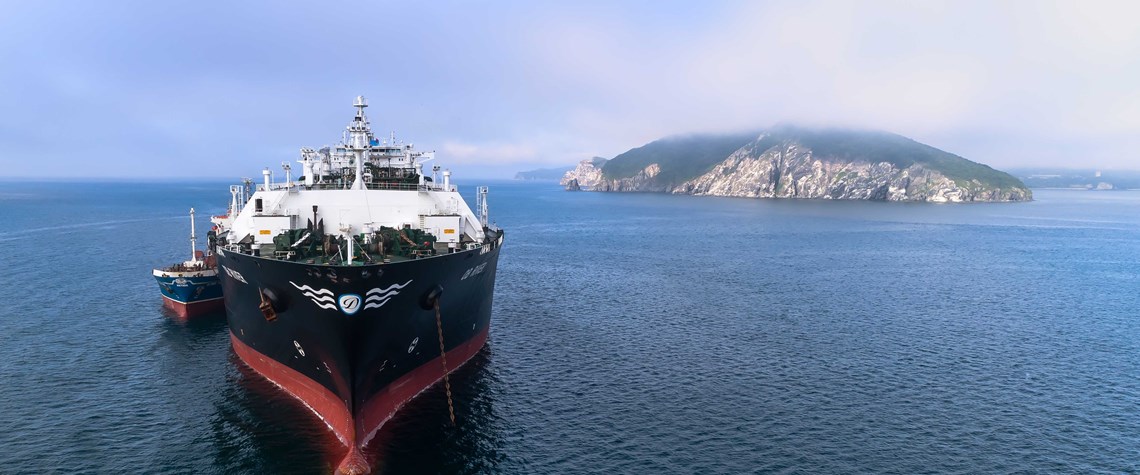With both conventional and unconventional gas discoveries flourishing across the globe in recent years—with countries as diverse as the US, Australia, Qatar and Egypt vying to dominate the LNG export market—a global supply glut is taking the shine off plans for export and import terminals across the Middle East. Yet a different, smaller kind of LNG terminal is on the rise: the LNG bunker terminal.
LNG bunkering—the use of LNG as marine fuel—is a relatively new option in the sector, despite having its origins in duel-fuel ship engines running on both gas and bunker fuel that were first introduced a quarter of a century ago. Spurred by the demand for cleaner marine fuels, its growth is already rapidly expanding in Europe, where Finland’s Wartsila pioneered the engine technology, as well as in East Asia and North America. The Middle East, where the Port of Fujairah in the UAE is the sole location providing LNG bunkering services, is racing to catch up.
“The cost of natural gas in the Middle East in general is very low and, as many of its ports lie on major shipping lines, we feel its potential to play a major role in LNG bunkering is very high,” says Alexander Panagopulos, the founder and CEO of Forward Ships, a company that designs LNG-powered vessels. “As demand for LNG bunkering grows with all types of ships switching to it, so does demand for bunkering infrastructure.”
Regional projects
A major LNG bunkering hub with a capacity of 1mn t/yr is under construction at Oman’s Sohar Port that is expected to come on stream by the middle of the decade. In July 2019, Total, which together with the Oman Oil Company is the operator of the project, awarded front-end engineering design contracts for it to the UK’s McDermott, Japan’s JGC and France’s TechnipFMC. According to local media reports citing Oman’s energy ministry, the total cost of the port expansion, which also includes a gas-to-liquids project, is expected to be c.$19bn.
Other players in the region are clambering to fill the niche. In September 2019, Shell and Qatar Petroleum struck a deal to establish a global LNG bunkering venture. In December 2018, Japan’s Inpex and Abu Dhabi’s Adnoc signed a similar agreement.
Global demand
Across the world, many LNG experts expect growth to skyrocket in the next few years, spurred by the introduction of a new marine fuels standard by the International Maritime Organization (IMO) at the beginning of January. IMO 2020 prohibits ships without scrubbing devices from using fuel with a sulphur content higher than 0.5pc, down from 3.5pc previously, and many see LNG as the cleanest and cheapest compliant fuel.
Global demand for LNG as bunkering fuel is expected to grow to 35mn t/yr by 2035, up from around 1mn t/yr at present, according to Shell. Similarly, an annual growth rate of 62.5pc for the LNG bunkering market over the next five years was predicted back in May 2019 by UK-based consultancy Ameco Research.
“LNG is significantly cheaper on an energy-equivalent basis than traditional liquid marine fuels such as [marine gasoil] and low sulphur fuel oils so the shipping industry represents a growing source of demand,” says Steve Esau, the general manager of the SEA\LNG, an industry coalition which advocates the use of LNG to power ships. “The energy consumption of the global shipping fleet is comparable to the global market for LNG.”
Technological solutions
Technical and logistical challenges remain: the cost of acquiring new LNG-powered vessels is still prohibitive to many companies, LNG tanks are up to 80pc larger than traditional fuel tanks, and safety concerns linger over the handling of fuel that needs to be cooled to a temperature of -160 C to stay stable.
Yet technology is progressing rapidly and increasing standardsation is helping the sector become more efficient. A new standard for LNG quick connect and disconnect couplings introduced by the International Organization for Standardization (ISO) last year will help streamline the development of infrastructure across the globe, explains Steven O’Malley, a senior expert at ISO.
“Previously, LNG-fuelled ships would be bunkered in the same port and probably by the same parties each time,” O’Malley says. “The ISO standard ensures that couplings built to its requirements [have] interconnectivity capability as well as adequacy of design.”
Find out the latest oil and gas developments in the Middle East, at Petroleum Economist’s LNG to Power event, on March 31st. For more information – click here








Comments